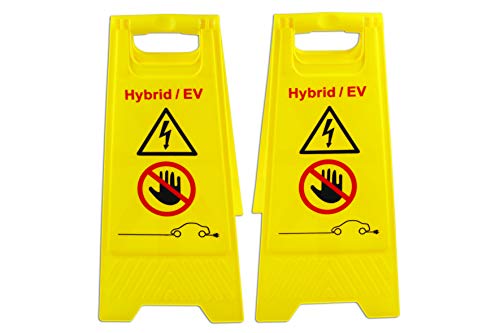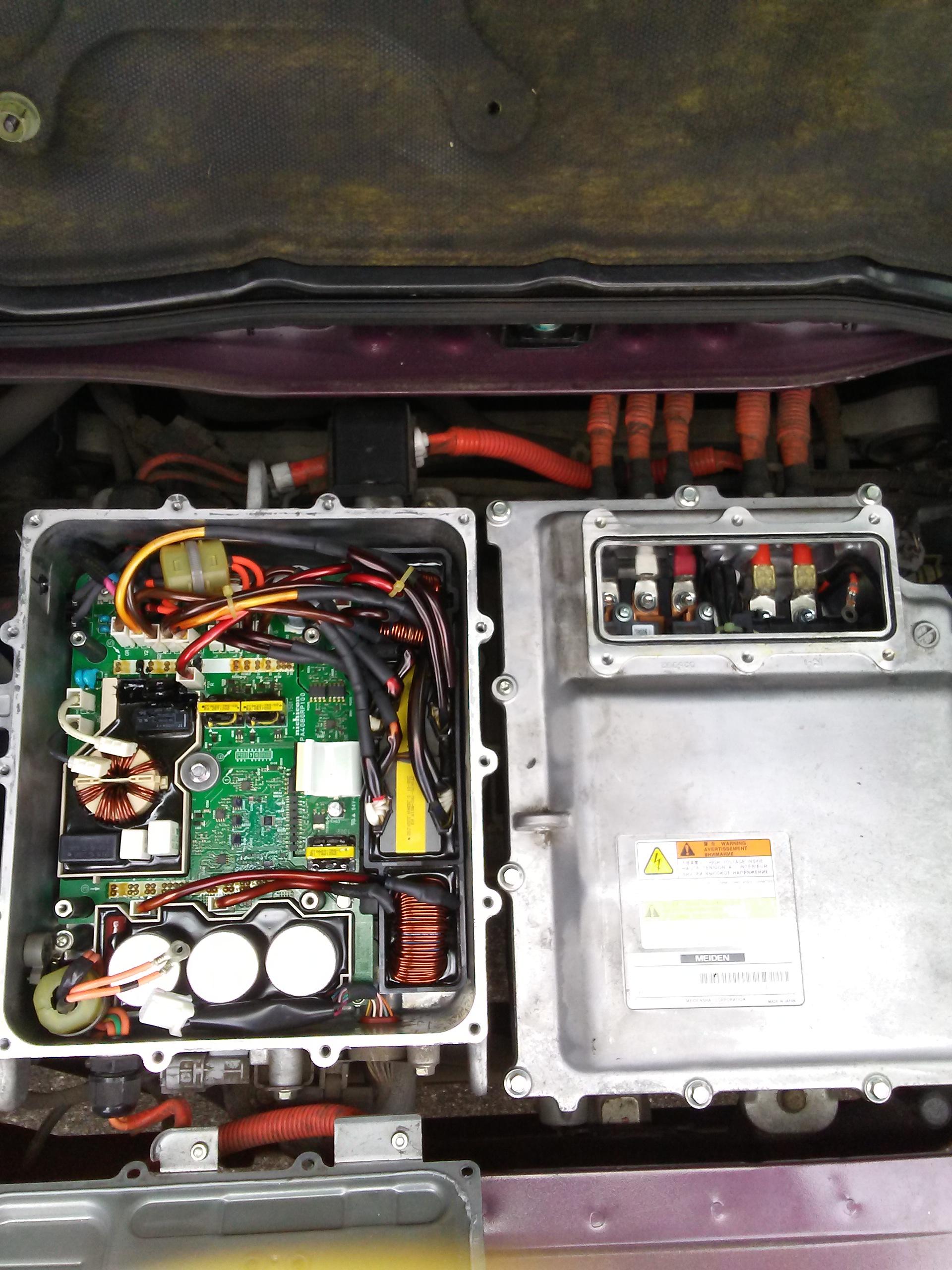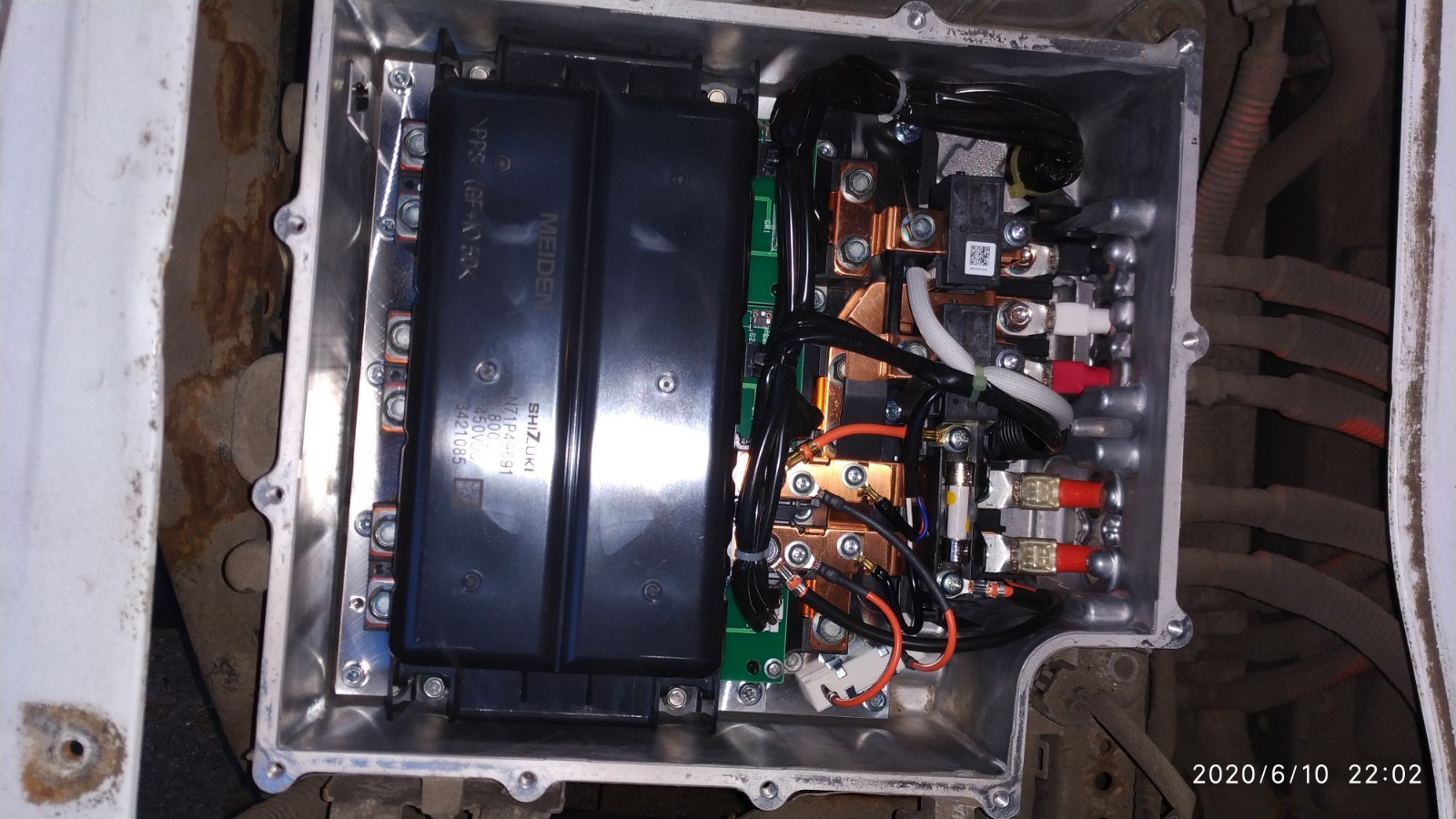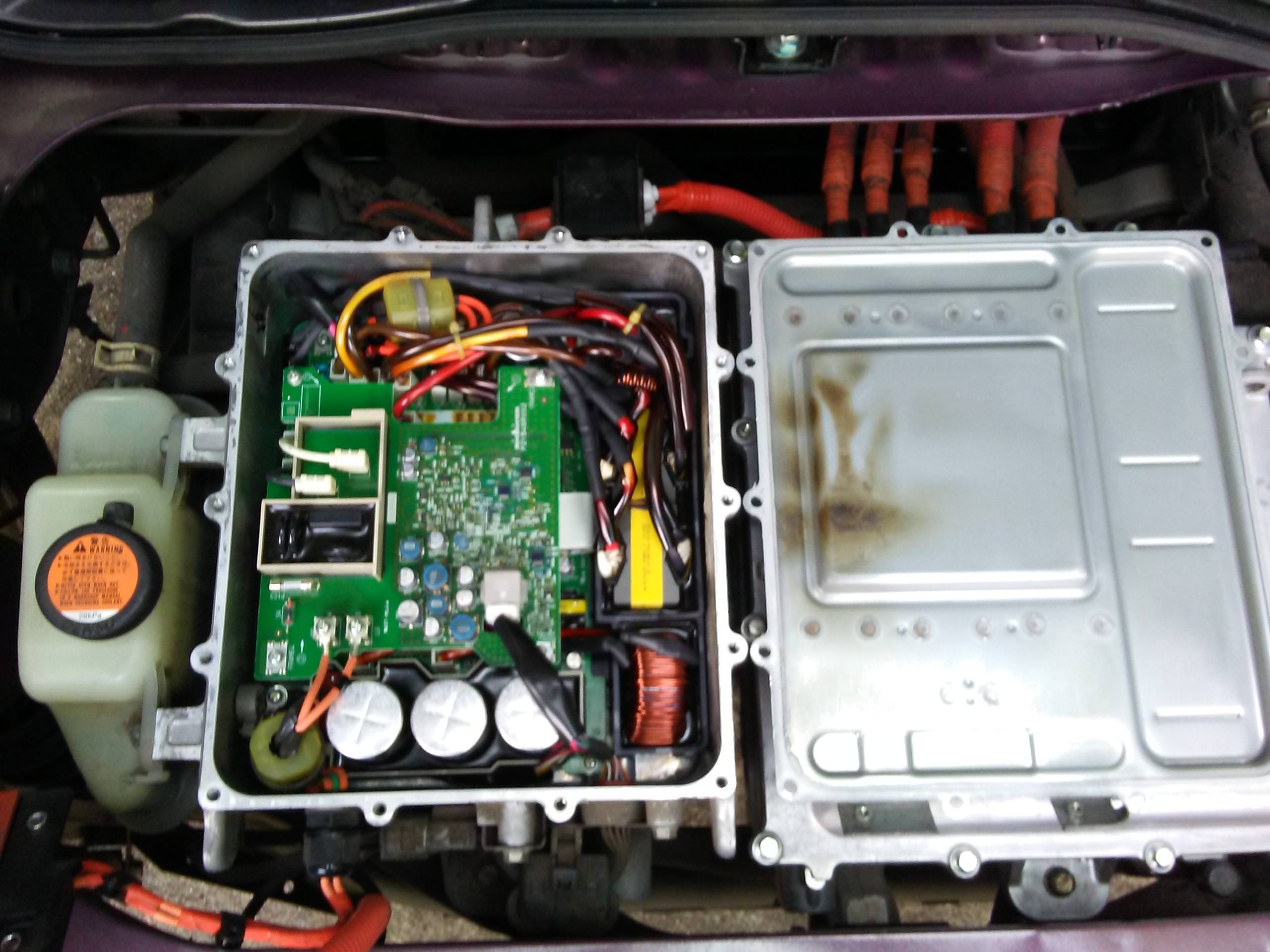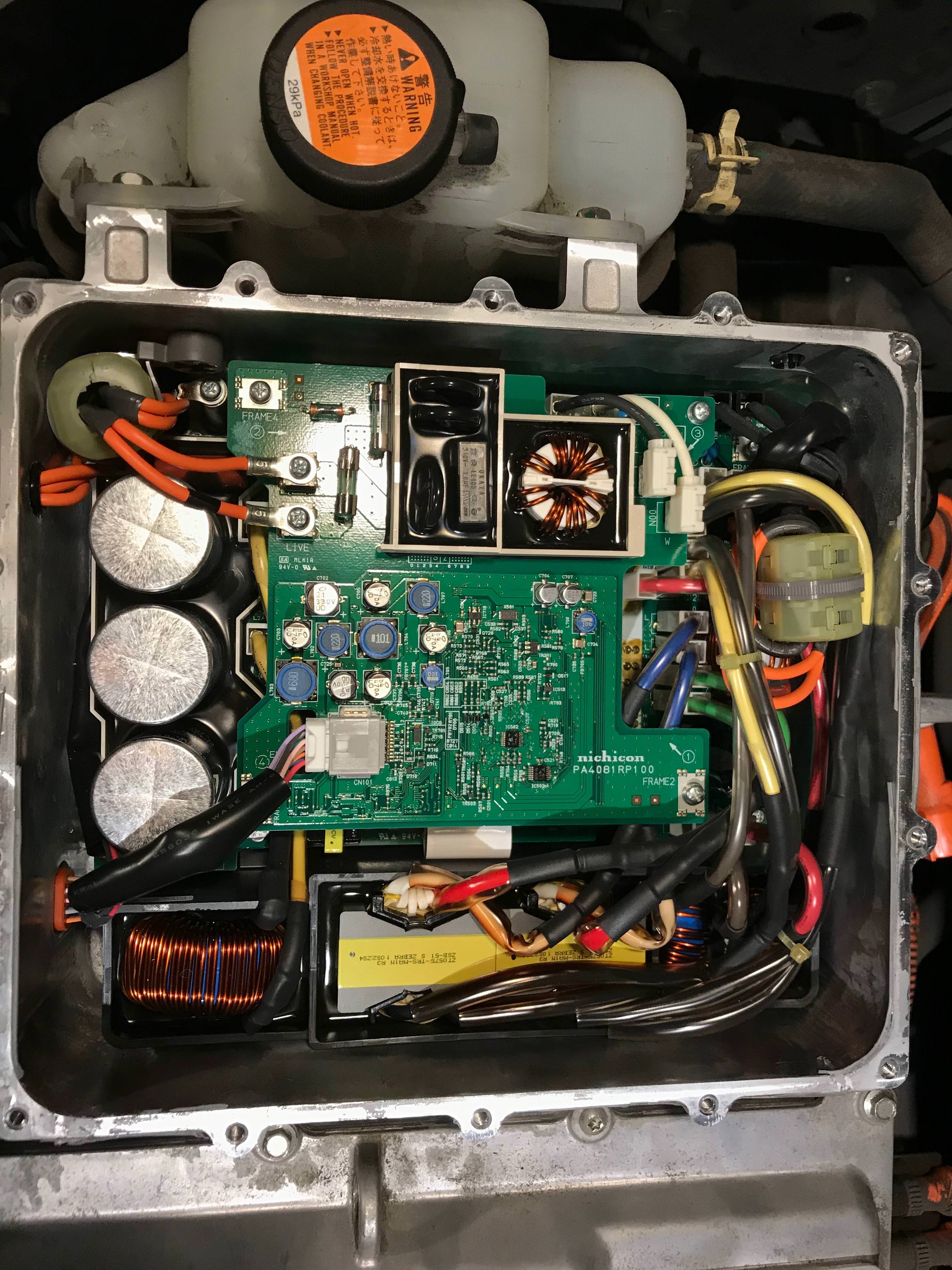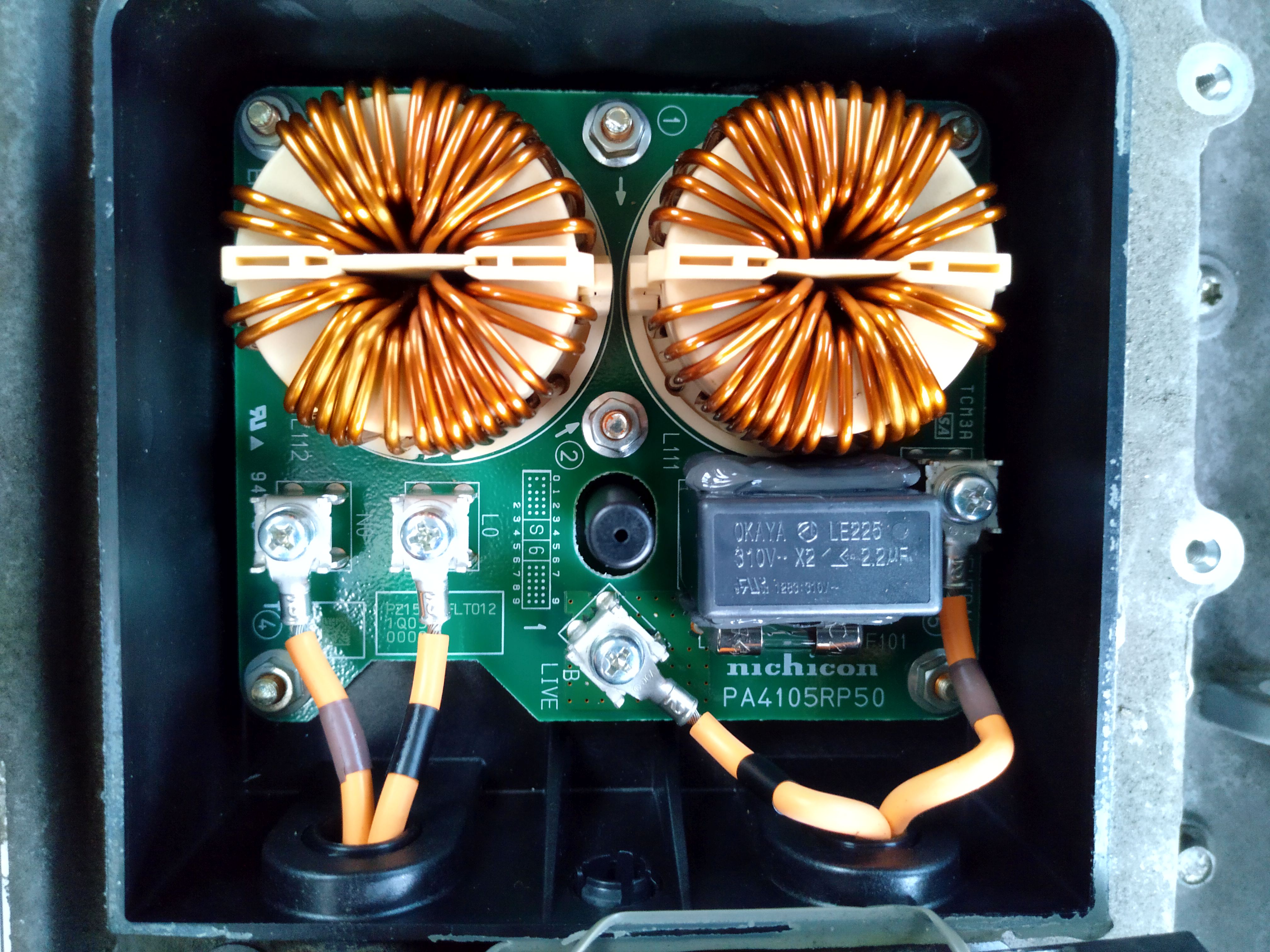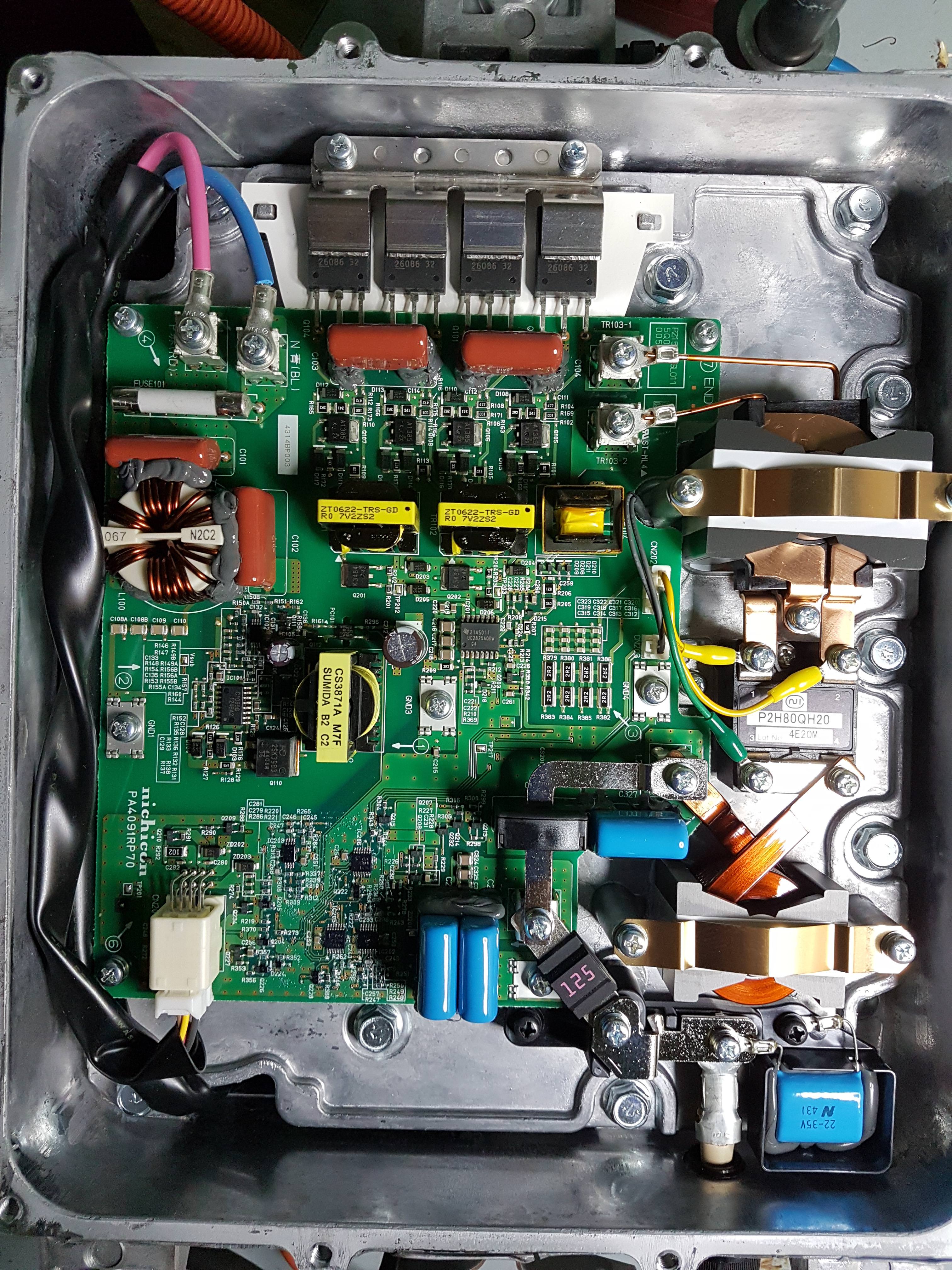It has taken a little while but here is where I am at, any help is greatly apricated.
I checked the 12v battery and it checked out good :
View attachment 1012
I checked all the fuses and relays under the hood that had a Plug symbol and they all were good.
I checked the continuity of the "L" and "N" little dots on the bottom board of the OBC. The 2 "L's" beeped when tested to each other and the 4 "N's" beeped when any 2 were tested. When either of the "L's" was tested to any of the "N's" there was no continuity (no beeps). I know that is a very non technical description but I hope it make's sense.
Video's of plugging in charger:
View attachment 1010
View attachment 1011
Car Scanner ELM OBD2
Version: 1.110.0/401100/GP
DTC report
Connection profile: Mitsubishi i-MiEVDate: 8/20/2024 6:05:50 PM
============================
OBD-IIOBD-II
DTCs: 1
----------------------------
P1AA7 [0x1AA7] Archive (inactive)
Status: Validated and stored in non volatile memory
============================
ABS control unit #2ABS control unit #2
DTCs: 1
----------------------------
U1100 [0xD100] Archive (inactive)
SCP (J1850) Invalid or Missing Data for Primary Id; Engine CAN timeout
Status: Validated and stored in non volatile memory
============================
Dashboard/Meter #2Dashboard/Meter #2
DTCs: 2
----------------------------
U1116 [0xD116]
SCP (J1850) Invalid or Missing Data for Electrical Energy Management; KOS CAN timeout/Not equipped
Status: Validated and stored in non volatile memory, Validated fault present at time of request
----------------------------
U1100 [0xD100] Archive (inactive)
SCP (J1850) Invalid or Missing Data for Primary Id; Engine CAN timeout
Status: Validated and stored in non volatile memory
============================
EV
No DTC found.
============================
BCM/ETACS #2BCM/ETACS #2
DTCs: 1
----------------------------
U1111 [0xD111]
SCP (J1850) Invalid or Missing Data for Primary Id; Display CAN timeout/Not equipped
Status: Validated and stored in non volatile memory, Validated fault present at time of request
============================
A/C), climate), heater #2A/C), climate), heater #2
DTCs: 1
----------------------------
U1100 [0xD100] Archive (inactive)
SCP (J1850) Invalid or Missing Data for Primary Id; Engine CAN timeout
Status: Validated and stored in non volatile memory
============================
BMUBMU
DTCs: 1
----------------------------
P1AA7 [0x1AA7] Archive (inactive)
Status: Validated and stored in non volatile memory
============================
CMU #1
No DTC found.
============================
CMU #2
No DTC found.
============================
CMU #3
No DTC found.
============================
CMU #4
No DTC found.
============================
CMU #5
No DTC found.
============================
CMU #6
No DTC found.
============================
CMU #7
No DTC found.
============================
CMU #8
No DTC found.
============================
CMU #9
No DTC found.
============================
CMU #10
No DTC found.
============================
CMU #11
No DTC found.
============================
CMU #12
No DTC found.
============================
E/V ECUE/V ECU
DTCs: 3
----------------------------
P1A12 [0x1A12] Archive (inactive)
Status: Validated and stored in non volatile memory
----------------------------
U1161 [0xD161] Archive (inactive)
SCP (J1850) Invalid or Missing Data for Primary Id
Status: Validated and stored in non volatile memory
----------------------------
U1160 [0xD160] Archive (inactive)
SCP (J1850) Invalid or Missing Data for Primary Id
Status: Validated and stored in non volatile memory
============================
MCUMCU
DTCs: 1
----------------------------
P1B18 [0x1B18] Archive (inactive)
Status: Validated and stored in non volatile memoryUOTE="Zombieron, post: 49877, member: 4585"]
It has taken a little while but here is where I am at, any help is greatly apricated.
I checked the 12v battery and it checked out good :
View attachment 1012
I checked all the fuses and relays under the hood that had a Plug symbol and they all were good.
I checked the continuity of the "L" and "N" little dots on the bottom board of the OBC. The 2 "L's" beeped when tested to each other and the 4 "N's" beeped when any 2 were tested. When either of the "L's" was tested to any of the "N's" there was no continuity (no beeps). I know that is a very non technical description but I hope it make's sense.
Video's of plugging in charger:
View attachment 1010
View attachment 1011
Car Scanner ELM OBD2
Version: 1.110.0/401100/GP
DTC report
Connection profile: Mitsubishi i-MiEVDate: 8/20/2024 6:05:50 PM
============================
OBD-IIOBD-II
DTCs: 1
----------------------------
P1AA7 [0x1AA7] Archive (inactive)
Status: Validated and stored in non volatile memory
============================
ABS control unit #2ABS control unit #2
DTCs: 1
----------------------------
U1100 [0xD100] Archive (inactive)
SCP (J1850) Invalid or Missing Data for Primary Id; Engine CAN timeout
Status: Validated and stored in non volatile memory
============================
Dashboard/Meter #2Dashboard/Meter #2
DTCs: 2
----------------------------
U1116 [0xD116]
SCP (J1850) Invalid or Missing Data for Electrical Energy Management; KOS CAN timeout/Not equipped
Status: Validated and stored in non volatile memory, Validated fault present at time of request
----------------------------
U1100 [0xD100] Archive (inactive)
SCP (J1850) Invalid or Missing Data for Primary Id; Engine CAN timeout
Status: Validated and stored in non volatile memory
============================
EV
No DTC found.
============================
BCM/ETACS #2BCM/ETACS #2
DTCs: 1
----------------------------
U1111 [0xD111]
SCP (J1850) Invalid or Missing Data for Primary Id; Display CAN timeout/Not equipped
Status: Validated and stored in non volatile memory, Validated fault present at time of request
============================
A/C), climate), heater #2A/C), climate), heater #2
DTCs: 1
----------------------------
U1100 [0xD100] Archive (inactive)
SCP (J1850) Invalid or Missing Data for Primary Id; Engine CAN timeout
Status: Validated and stored in non volatile memory
============================
BMUBMU
DTCs: 1
----------------------------
P1AA7 [0x1AA7] Archive (inactive)
Status: Validated and stored in non volatile memory
============================
CMU #1
No DTC found.
============================
CMU #2
No DTC found.
============================
CMU #3
No DTC found.
============================
CMU #4
No DTC found.
============================
CMU #5
No DTC found.
============================
CMU #6
No DTC found.
============================
CMU #7
No DTC found.
============================
CMU #8
No DTC found.
============================
CMU #9
No DTC found.
============================
CMU #10
No DTC found.
============================
CMU #11
No DTC found.
============================
CMU #12
No DTC found.
============================
E/V ECUE/V ECU
DTCs: 3
----------------------------
P1A12 [0x1A12] Archive (inactive)
Status: Validated and stored in non volatile memory
----------------------------
U1161 [0xD161] Archive (inactive)
SCP (J1850) Invalid or Missing Data for Primary Id
Status: Validated and stored in non volatile memory
----------------------------
U1160 [0xD160] Archive (inactive)
SCP (J1850) Invalid or Missing Data for Primary Id
Status: Validated and stored in non volatile memory
============================
MCUMCU
DTCs: 1
----------------------------
P1B18 [0x1B18] Archive (inactive)
Status: Validated and stored in non volatile memory































